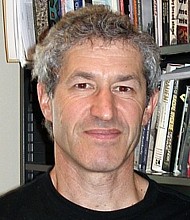2018 Text
Harold Marcuse is a professor of German and Public History at the University of California, where he has been teaching since 1992. His interest in German history began while he was studying abroad in the 1970s. After completing his B.A. in the US, he returned to study at the universities of Freiburg, Munich and Hamburg. In 1985 he completed his Magister with a thesis about a 1949 memorial dedicated to "the victims of national-socialist persecution and the resistance struggle" in Hamburg. He was also the originator of a traveling exhibition about post-1945 memorials commemorating events of the Nazi era and World War II. In the wake of US President Reagan's Bitburg-Bergen Belsen debacle in 1985, the exhibition was shown in more than two dozen West German cities. Marcuse then went back to the US, where he completed his Ph.D. at the University of Michigan with a thesis that became his 2001 book Legacies of Dachau: The Uses and Abuses of a Concentration Camp, 1933-2001. He has since published numerous articles about historical museums, monuments and memorials in the US and throughout Europe
He is currently working on a collection of case studies of the reception of various events in German history over time. These include how the World War I Stab-in-the-Back came always to have "legend" after it, how Kristallnacht came to be conceptualized, named and interpreted over time, and when, where and how common conceptions about Hitler's biography originated and have evolved over time. His most recently published article in this collection is about the well-known quotation "First they came for the communists,...," which has developed different canonical versions in Germany, the US and Israel, all of which deviate from the original versions presented by Martin Niemöller beginning in 1946.
2010 Bullet-point version
- While studying Art History
and History in
the mid-1980s in Germany, Marcuse co-produced
a photographic exhibition "Stones of Contention" ("Steine des Anstosses")
comparing the memorials and monuments around the world
for the victims of the Holocaust, and the civilian and military dead of
World War II.
- The
exhibition was shown in more than twenty German cities from 1985 to 1993.
- It was shown at the time
of the controversy about US president Reagan's visits to Bergen-Belsen
and Bitburg in 1985, and the debate over a proposed national victims memorial
in Bonn and then Berlin.
- Marcuse received his doctorate from the University of Michigan.
- Since 1992 he has
been at the University of California, Santa Barbara, where he is
now an associate professor of German and Public History.
- The focus of his research has been how different groups in Germany have dealt with or "come to terms"
with legacies of the Nazi era, and what effects that process has had
on the political culture of Germany.
- Publications include:
- Legacies
of Dachau: The Uses and Abuses of a Concentration Camp,
1933-2001" (Cambridge University Press, 2001).
- uses the history of the Dachau concentration camp after World War Two, namely from
1945 to after 2000, to examine how West Germans confronted the legacies of Nazism.
- This book won the 2003 Hans
Rosenberg Book Prize,
for the best monograph on Central European history published in 2001-02.
- He has written essays and articles on how and why events of the Nazi and World
War II eras have been represented in various countries.
- The most recent articles
(2009-2010) are:
- "Holocaust Memorials:
The Emergence of a Genre,"
- in the American Historical Review (February 2010)
- about how memorials specifically about the Holocaust
developed during the period from 1942 to 1960
- "Memorialising Persecuted
Jews in Dachau and Other West German Concentration Camp Memorial Sites,"
- in a collection about Memorialisation in Germany since 1945
- "The Afterlife of
the Camps"
- in the anthology New Research on the History
of the Concentration Camps
- offers an overview of the most recent
research about what happened to the Nazi camps all across Europe after liberation.
|
